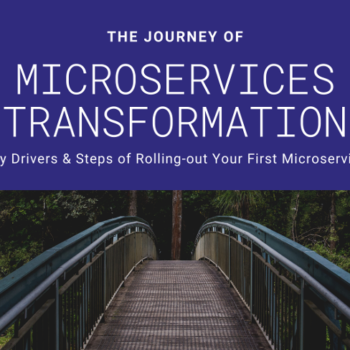
What Is Business Process Modeling and How It Helps Your Organization?
- Posted by Adham Jan
- On June 29, 2020
Business process modeling is an essential step for business automation; this is how organizations have a visual representation for their current processes enabling them to identify bottlenecks and areas of improvement. In fact, process modeling is an important technique primarily used by business analysts to map a process facilitating analysis and recommendations.
Organizations start with analyzing their current business processes when they consider adopting workflow automation technologies like Robotic Process Automation (RPA), Business Process Management (BPM).
With the increasing amount of internal processes, some organizations document step-by-step instructions to provide employees with appropriate documentation to complete their work efficiently and consistently. These instructions are called “Standard Operating Procedures“ (SOP). SOP documentation is another use case; process modeling facilitates the process of documenting internal processes as well as visualizing the steps performed by each role. There are tools facilitating SOP documentation using process modeling techniques such as IBM Blueworks Live.
What is Business Process Modeling?
Business process modeling helps organizations to document the business processes that they have and gives a visual representation of their processes and workflows to aid analysts in creating graphical images of current pipelines to highlight where organizations can make improvements. There are two different states involved in process modeling:
- As-is — Shows a snapshot of a process; the way it looks now with no further improvements.
- To-be — Demonstrates the potential future state of a process once an organization implements recommended changes.
How Business Process Modeling Helps Organizations
Using business process modeling gives organizations the ability to get a more realistic picture of how different areas currently function. It functions as an essential step for business automation adoption and helps organizations evaluate where they can make continuous, tangible improvements throughout the organization.
1. More Organized Process Discovery and Documentation
Modeling business processes on a wide-scale basis is key to keeping an updated repository of current workflows throughout an organization. That makes it easier for analysts, business stakeholders, and other users to access information needed to implement potential improvements. Here comes the benefits of modeling your organization’s SOPs in a structure process modeling tool accessible by all employees with different access privileges.
Updated and organized visualizations improves the quality of conversations related to business analysis. They act as a focal point, removing any potential ambiguity around what needs to be done and why change may be necessary.
2. Better Team Collaborations
In addition to centralizing your organization’s SOPs in a unified platform, Business process modeling helps teams come together to resolve a business problem. The visuals guide teams towards coming up with solutions meant to address the issue at hand. They put everyone on the same page, removing the complications that often arise when multiple people throw in their interpretation of a problem.
Team members have access to the same documents, making it easier to collaborate, share, make changes, and get needed approvals. Modeling processes makes your to do list clear and makes it easier to find the right path toward a viable solution.
3. Improved Business Workflows
Once mapping and modeling the “As-Is” processes, organizations along with business analysts can identify their current challenges such as bottlenecks within a process causing a delay.
Here, comes the role of business process re-engineering. where further studies and analysis are performed on the process with different techniques like root cause analysis until stakeholders come up with an optimized process which is called “To-Be”. “To-Be” process visualizes the potential impact of recommendations and changes resulted from the “As-Is” analysis. That’s why; process modeling is an essential step for business automation. To automate a process, you need to analyze it in terms of steps, roles, policies, etc. Some processes are automated “As-Is” with their current state; while others require optimization in some of the steps to benefit from automation.
IBM Blueworks Live
There are numerous tools for business process modeling where business users can map and draw their existing processes. IBM offers Blueworks Live; a robust and collaborative platform where organizations can map and model their workflows. It’s a web-based application, accessible from anywhere and provides a centralized repository for all your processes. In addition to documentation benefits, Blueworks Live facilitates the transformation of your business processes over business automation solutions such as IBM Business Automation Workflow (BAW).
Using Process Modeling as an Essential Step for Business Automation
The simplest way to start modeling business processes, is by picking up a pen and a piece of paper. However, you need something more when it comes time to digitizing processes and implementing improvements. That’s where many companies can reap the benefits of using automation to implement improvements discovered during business process modeling.
One of the most common ways of doing that is by relying on robotic process automation (RPA). Firstly, RPA captures and interprets the steps necessary for processing transactions. Moreover, RPA works with information from various data stores, triggers responses from company systems, and sends necessary communications. In addition to automating email responses to common customer inquiries or informing IT personnel of a software deployment failure.
Business automation makes it possible for organizations to implement changes aimed at reducing human errors in transactions while lowering administrative costs. It removes the need to have employees perform redundant tasks, allowing businesses to make better use of their skills in other areas. You can enhance RPA with other technologies like machine learning and speech recognition. Enhancing RPA will help perform tasks typically requiring higher-level human judgment.
Contact Us today for more information about how to adopt automation solutions




